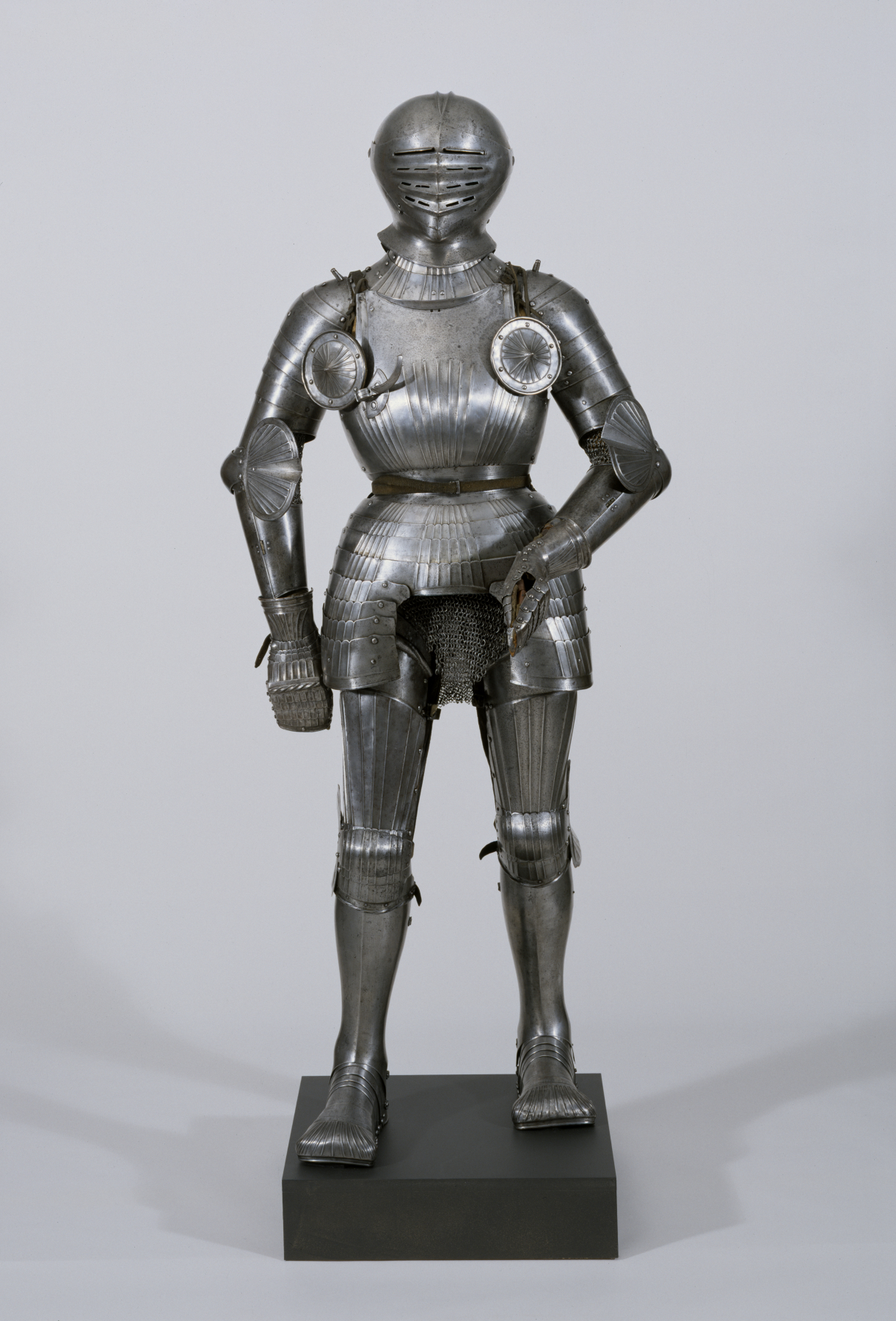Maximilian Armor
(Renaissance Europe )
Towards the end of the reign of Maximilian I as Holy Roman Emperor (1493-1519), a new style of armor emerged in Germany. Sometimes called "Maximilian armor," it was in fashion from about 1510 until 1530. Its distinctive fluting gave it strength without increasing its already substantial weight (a complete suit of armor weighed 40 to 50 pounds). The hook attached to the right breat is to support a lance. Though the elements of this suit are stylistically consistent, they were assembled from more than one source.
Provenance
Provenance (from the French provenir, 'to come from/forth') is the chronology of the ownership, custody, or location of a historical object. Learn more about provenance at the Walters.
Hefner-Altneck, Munich, 1904 [date and mode of acquisition unknown] [no. 47, pl. 14]; Keasbey [date and mode of acquisition unknown]; Henry Walters, Baltimore, 1925 [mode of acquisition unknown]; Walters Art Museum, 1931, by bequest.
Geographies
Germany (Place of Origin)
Measurements
Armor H: 65 3/8 x W: 29 1/2 x D: 20 3/4 in. (166 x 75 x 52.7 cm)
Credit Line
Acquired by Henry Walters, 1925
Location in Museum
Not on view
Accession Number
In libraries, galleries, museums, and archives, an accession number is a unique identifier assigned to each object in the collection.
In libraries, galleries, museums, and archives, an accession number is a unique identifier assigned to each object in the collection.
51.584




